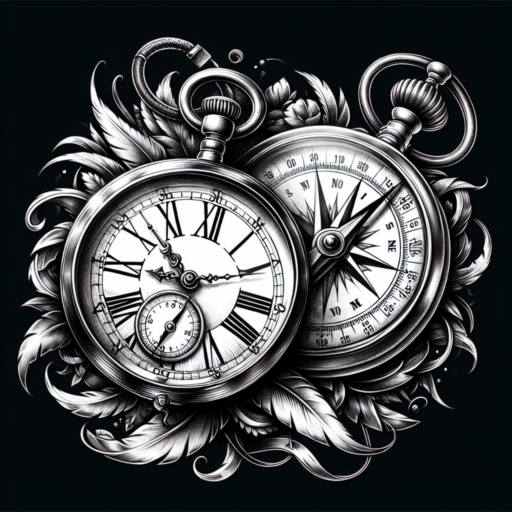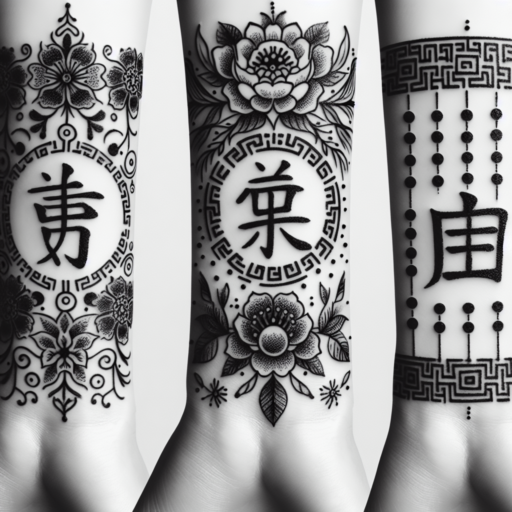What’s the easiest tattoo to do?
When it comes to tattooing, beginners might be looking for a simple starting point to hone their skills or to experience the least painful introduction possible. The easiest tattoos to do are generally those with simple designs, minimal shading, and require less precision. These are often small, uncomplicated symbols or basic line art that can be completed in a single session, making them an ideal choice for first-timers.
Simple Symbols and Icons
Simple symbols such as hearts, stars, or infinity signs are among the easiest tattoos to execute. Their straightforward shapes mean there’s less room for error, and they can often be done quickly. These types of tattoos are also easily recognizable and can carry significant personal meaning while being aesthetically pleasing in their simplicity.
Basic Line Art
Basic line art, including minimalist designs and simple geometric shapes, stands out for its clean lines and uncomplicated nature. Such tattoos require a steady hand to ensure the lines are crisp and even, but the lack of shading and color makes the process less complex than more detailed tattoos. Practicing line work can also provide a good foundation for more intricate designs in the future.
While the concept of an «easy tattoo» can vary from one artist to another based on their skill levels and comfort with different designs, focusing on simplicity and minimizing details can lead to beautiful results that are achievable for beginners. It’s important for anyone considering a tattoo, whether easy or complex, to consult with a professional to ensure the best outcome.
What kind of tattoos don’t age well?
Understanding which tattoos might not stand the test of time can save you from future disappointment. Certain styles and locations on the body are more prone to fading, blurring, and distortion due to the natural aging process, sun exposure, and changes in your skin.
Highly Detailed Designs
Tattoos with extremely fine lines and intricate details may look stunning when first inked, but over time, these can blend together. As the skin ages, it loses elasticity and can cause the ink to spread slightly, making those detailed designs less discernible.
Light Colored Inks
Lighter colored inks, such as yellows, pinks, and light blues, tend to fade more quickly than their darker counterparts. They are less visible on the skin to begin with and become even more so as they age, especially when exposed to sunlight frequently. Darker inks like black, navy, and dark green maintain their appearance longer and require fewer touch-ups over time.
Tattoos in High Friction Areas
Tattoos placed in areas of high friction or where the skin frequently folds can experience faster degradation. Locations such as fingers, palms, feet, and elbows are notorious for rapid fading because these areas shed skin cells more quickly due to constant movement or pressure.
Being mindful of these factors can help in choosing a tattoo that remains vibrant and clear for years to come. Opting for designs with bold lines, deeper colors, and in less abrasive areas can significantly enhance the longevity of your tattoo.
No se han encontrado productos.
How long do nature tattoos last?
The longevity of nature tattoos, like any other ink art, primarily depends on various factors, including the location of the tattoo, the ink quality used by the tattoo artist, and how well the tattoo is cared for post-application. Essentially, a well-executed nature tattoo can retain its vibrancy and detail for years, often ranging from five to ten years before noticeable fading occurs. However, with meticulous care, the beauty of these natural landscapes and elements captured on skin can be extended even further.
Care and maintenance are crucial for preserving the lifespan of nature tattoos. Immediately after getting inked, following the tattoo artist’s aftercare instructions will protect the tattoo from infection and excessive scabbing, which can blur lines and distort colors. As the tattoo heals, ongoing care involves moisturizing, applying sunscreen when exposed to direct sunlight, and avoiding abrasive scrubs on the tattooed area. Such practices help in maintaining the sharpness and luster of the intricate designs typical of nature tattoos, from the delicate shading of leaves to the vibrant hues of flowers and animals.
Another aspect to consider is the placement of the tattoo. Areas of the body that experience more friction, like hands, feet, and elbows, tend to see tattoos fading faster compared to less exposed areas. Additionally, the skill level of the tattoo artist plays a significant role. Experienced artists who specialize in nature tattoos can create detailed designs using techniques and inks that are known to last longer, thus giving your nature-inspired tattoo a longer life span.
Where to put a minimalist tattoo?
Deciding on the perfect spot for a minimalist tattoo requires thoughtful consideration. Each location on the body can convey a different essence or meaning, making the choice as personal as the design itself. Minimalist tattoos, known for their simple yet profound artistry, fit beautifully in various locations that highlight their elegance without overwhelming the viewer.
Popular Locations for Minimalist Tattoos
Among the most favored locations for minimalist tattoos is the wrist, offering a subtle yet visible canvas. The inner wrist, in particular, serves as a discreet place, allowing the wearer to hide or reveal their art with ease. Another revered spot is behind the ear, a choice for those seeking an intimate yet unique location. This area provides a touch of mystery, as the tattoo can be easily concealed or shown off with a simple change in hairstyle. The ankle, too, stands out as a prime choice, especially for its versatility and the ability to add a hint of playfulness or sophistication to the minimalist design.
Choosing Your Ideal Spot
When selecting the ideal location for your minimalist tattoo, consider your lifestyle, professional environment, and personal style. Areas like the wrist or ankle offer flexibility in visibility, making them suitable for those in more conservative professions. Behind the ear can cater to those looking for something more personal and less conspicuous. Ultimately, the decision should resonate with how you wish to showcase your minimalist art; whether it’s a daily display of personal significance or a hidden gem meant for only the most observant eyes.



